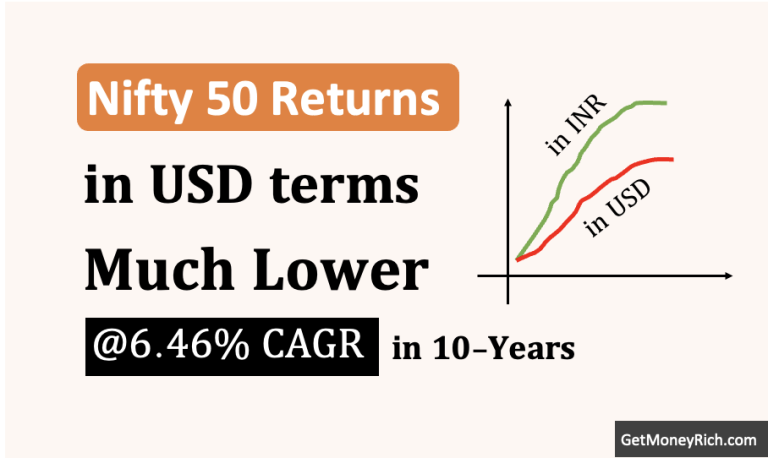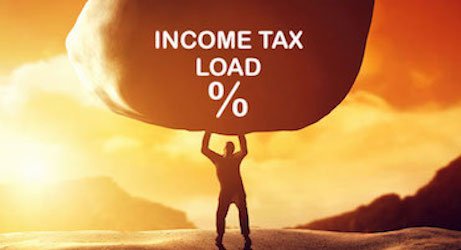There is a strong relationship between GDP and tax revenue.
But before we must know what is GDP (Gross Domestic Product). GDP is an indicator of a countries economic health.
GDP figure also show how big is the economy. But why we use GDP.
In layman terms GDP compares earning and spending power of different countries.
How we know that USA has a stronger economy compared to Pakistan?
This comparison is done by looking at GDP figures of the two countries.
Compared to USA’s GDP of $16,800 Billion, Pakistan’s GDP is only $236.62 billion (1.4%).
What does this comparison tells us? Comparing GDP of two nations we know which country is economically healthier.
In this case GDP of USA is very high compared to Pakistan.
So we can conclude that USA has much healthier economy than Pakistan. The higher is the GDP the better.
Ideally countries must also increase their GDP year after year.
This is know as GDP growth rate.
A country which has faster GDP growth rate will become more prosperous in next years.
GDP of countries in FY 2013-14
| Countries GDP in 13-2014 | Billion USD |
| India | $1,876.80 |
| Neighbouring Countries | |
| Afghanistan | $20.72 |
| Bangladesh | $129.86 |
| Bhutan | $1.88 |
| Pakistan | $236.62 |
| Srilanka | $67.18 |
| BRIC Nations | |
| Brazil | $2,245.67 |
| Russia | $2,096.78 |
| China | $9,240.27 |
| Developed Nations | |
| USA | $16,800.00 |
| UK | $2,522.26 |
| Germany | $3,624.82 |
| France | $2,734.95 |
| Italy | $2,071.31 |
| Spain | $1,358.26 |
| Saudi Arabia | $745.27 |
| South Africa | $350.63 |
| Japan | $5,960 |
| Australia | $1,560.60 |
Indian states that Contribute most to Indian GDP are..
| State/union territory | 2012–13 nominal GDP |
| (in Crores of Rupees) | |
| India | 9,388,876 |
| Maharashtra | 1,372,644 |
| Uttar Pradesh | 768,930 |
| Andhra Pradesh | 754,409 |
| Tamil Nadu | 744,474 |
| Gujarat | 670,016 |
| West Bengal | 620,160 |
| Karnataka | 524,502 |
| Rajasthan | 459,215 |
| Madhya Pradesh | 372,171 |
| Kerala | 349,338 |
| Delhi U.T. | 348,221 |
| Haryana | 345,238 |
| Bihar | 313,995 |
| Punjab | 286,809 |
| Odisha | 255,459 |
| Jharkhand | 164,876 |
| Chhattisgarh | 153,621 |
| Assam | 141,621 |
| Uttarakhand | 113,958 |
| Jammu & Kashmir | 75,574 |
| Himachal Pradesh | 73,710 |
| Goa | 34,965 |
| Chandigarh U.T. | 26,162 |
| Tripura | 23,855 |
| Meghalaya | 18,135 |
| Puducherry U.T. | 17,192 |
| Nagaland | 14,832 |
| Arunachal Pradesh | 12,091 |
| Manipur | 11,983 |
| Sikkim | 9,957 |
| Mizoram | 8,053 |
| Andaman and Nicobar Islands U.T. | 5,067 |
Relationship between GDP and Tax Revenue can be established by knowing how GDP is calculated
GDP is generally calculated by Expenditure Approach.
Measuring GDP is complicated. But by using expenditure apprach the complexity gets slightly reduced.
GDP is calculated by adding total consumption, investment, government spending and net exports.
When we see the GDP formula, a big portion of countries GDP comes from Government Spending’s.
Generally government spendings are done to make economy more productive.
Some activities where Indian government spends its revenues are:
- PLANNED EXPENDITURE (as per 5 Years Plan) – 35%
- CAPITAL EXPENDITURE (for creation of new asset)
- Education Institutions Construction
- Build Roads
- Bridge Construction
- Airport Construction
- Assets for Urban Infrastructure
- NON-PLANNED EXPENDITURE – 65%
- Maintenance of Assets (existing)
- Expense for Administration Services
- Interest Payment
- Expense due to Subsidies
- Part of Expense on Defense Services
In order to meet the target of government’s spending, government must first collect sufficient Revenues
Government target for ‘spending’ in represented in ANNUAL BUDGET.
A typical Annual Budget of India is shown here.
Annual budget can be dividend into three main component.
First talks about how government collects its revenues. It is called ‘Total Receipts’.
Second talks about how government plans to spend its revenues.
It is called as “Total Expenditure”. Ideally Total Receipts = Total Expenditure without resorting to borrowing money.
But Indian economy is not so blessed.
Indian economy has fiscal deficit.
It has to resort to borrowing to meet the target of ‘Spending’.
From the above Annual Budget figures, one can see that out of the total GDP, 14.79% is constituted by Government Spending’s.
In order to spend the 14.79% of GDP government must first collect sufficient revenues from public.
It is clear that 14.79% of GDP means Rs 16.65 Lakh Crore.
Out of these Rs 16.65 Lakh Crore, almost Rs 8.85 Lakh crore (53%) comes from Tax Revenues.
Conclusion
There is a strong relationship between GDP and tax revenue.
To calculate GDP, government spending is a very important component.
In order to meet the target of government spending it must first collect enough revenues.
Major portion of government’s revenue collection is Tax Revenue.

![How Changes in Oil Supply Affect the World and our Investments [Explained] - Thumbnail](https://ourwealthinsights.com/wp-content/uploads/2025/03/How-Changes-in-Oil-Supply-Affect-the-World-and-our-Investments-Explained-Thumbnail-768x463.png)
![Indian Rupee Hits Record Low: A Historic Dip [2024]](https://ourwealthinsights.com/wp-content/uploads/2024/11/Indian-Rupee-Hits-Record-Low-Thumbnail-768x436.png)

